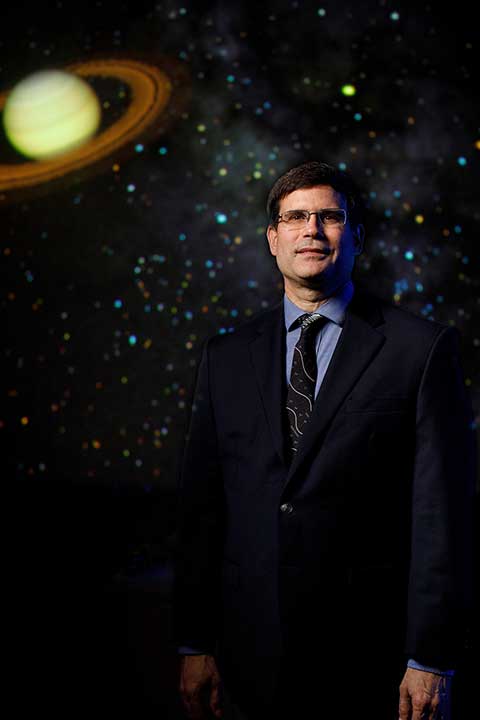Florida Gulf Coast University’s resident star man, Derek Buzasi, is making news again. The researcher known for his ability to measure stars has revealed the mass and age of Mimosa – a massive blue star that is represented on the flags of multiple nations, including Australia. Buzasi is part of an international team of researchers studying this phenomenon.
According to a release, the scholars determined Mimosa, also known as Beta Crucis, is “14.5 times as massive as the sun and as young as 11 million years old, making it the heaviest star with a precise age determined from asteroseismology” – the study of stars using sound waves.
“Think of oscillations as sound waves,” Buzasi once told FGCU360 magazine about asteroseismology. “It’s as if you were listening to a bell with instruments and trying to use that information, working backward, to figure out how the bell is made. That’s really what we are doing.”

The star Mimosa is part of the Southern Cross constellation, which in summertime rises just above the southern horizon as seen from South Florida. The observations made for this research, led by Daniel Cotton from the Monterey Institute for Research in Astronomy in California, are from multiple sources. Not only did data come from WIRE and TESS, but also observatories in Chile and Australia.
“The keys to the success of this research were combining information from the TESS satellite with many observations made at the same time from the ground using a new instrument that Daniel and his team built. TESS tells us the notes the star is singing, and HIPPI-2 tells us how the shape of the star is changing”, said Buzasi. “Stars like Mimosa go on to explode as supernovae and become black holes, so they are major players in the evolution of our galaxy.”
A Whitaker Eminent Scholar, Buzasi is considered a pioneer of asteroseismology. Using the surviving instruments on NASA’s failed WIRE—the Wide-Field Infrared Explorer—satellite mission in 1999, the future FGCU astronomy professor was the first scientist to put asteroseismology into practice from space. His efforts ensured WIRE could still contribute to the understanding of stars. It also led to even more important work for Buzasi at FGCU decades later.
In fall 2018, Buzasi was in Cape Canaveral watching the launch of TESS—the Transiting Exoplanet Survey Satellite. As part of the mission’s guest investigator program, Buzasi and his students were able to gather new data on the stars he studied in 1999. Mimosa was among his celestial selections both times.
The new research from Buzasi and team is published in Nature Astronomy as of Dec. 6, 2021. To read the research, visit the periodical’s website.
